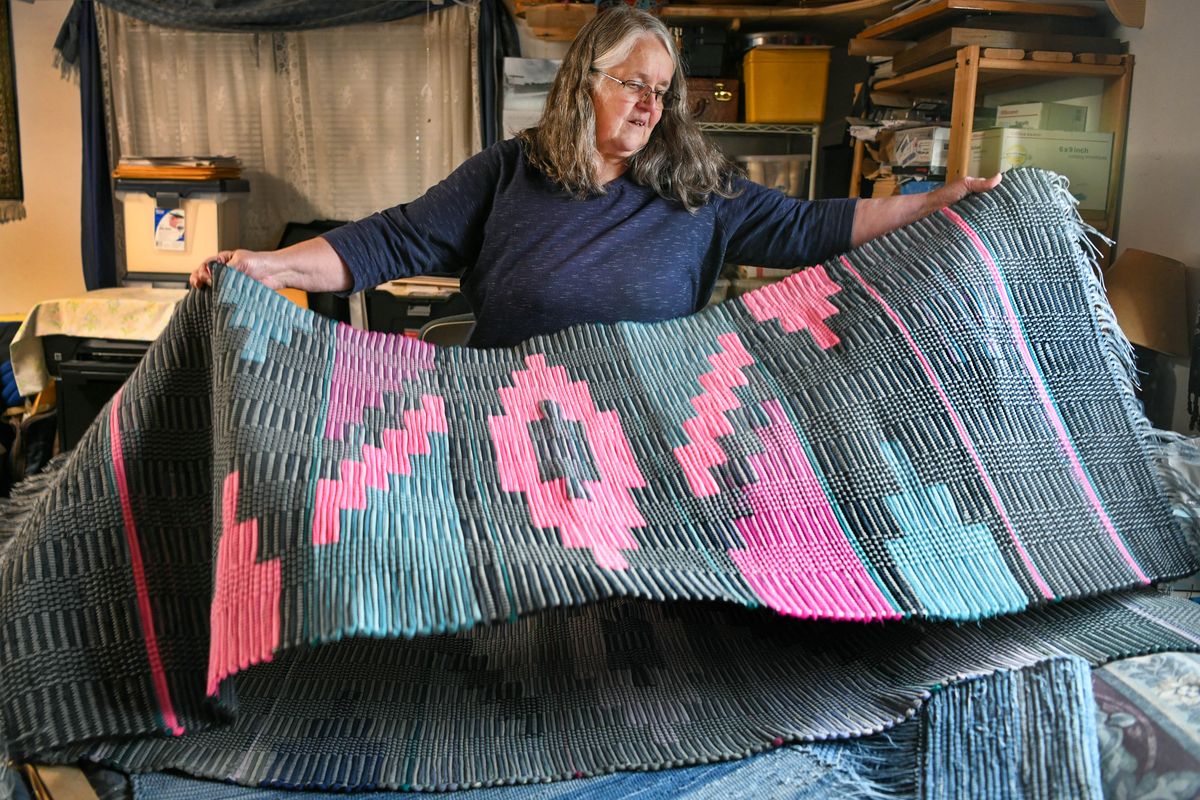Pandemic project: Weaving together family history: Ginny Rajala of Airway Heights gets back to hobby of weaving rugs

Ginny Rajala’s inspiration for her pandemic project was right in front of her. Or rather, right in front of her loom.
For years a handwoven rug has hung above her work area.
Rajala has always loved rag rugs.
“As a child, there was always a series of rag rugs by my bed,” she said.
In 1978, she traveled to Michigan with her husband, Dave, to meet his grandmother, Fannie Tamppari, known as Aiti, which is Finnish for mother.
“Aiti learned to weave in Finland and continued weaving up until she was in her early 90s,” Rajala said. “She gave us one of her ‘picture rugs,’ as she called them. We’ve always had it hanging on a wall somewhere in our house.”
Instead of the traditional striped pattern, Aiti’s picture rugs feature geometric shapes resembling Navajo designs. No one is sure how the Finnish immigrant learned this pattern, but they became her trademark.
Tamppari’s work is featured in the book “Finnish American Rag Rugs: Art, Tradition & Ethnic Continuity,” by Yvonne R. Lockwood and published by Michigan State University Press in 2009.
That Michigan visit inspired Rajala to weave her own rugs.
“I wove my first rug on her loom,” she said.
She ran her hand along a sturdy loom in her Airway Heights home.
“Dave and I built this in 1978,” she said.
Next to it is a smaller loom with a rag rug in progress.
“My mom found this in Colville for me,” she said.
For years she’s woven traditional rag rugs made from fraying towels, old flannel sheets, and fabric from thrift store discard bins. She made dozens of denim rugs, using old jeans and work shirts. When the pandemic hit she was ready for a new challenge.
“I was bored with denim. I took Aiti’s rug off the wall, counted, measured and diagrammed it to get the pattern.”
Cutting the rags into strips and ensuring they’re the right length takes some time, but once she starts weaving rugs come to life beneath her capable hands.
Even so, Rajala said, “Pattern rugs were tedious to weave because each row is done separately.”
Thanks to the pandemic, she had plenty of hours to spend at her loom.
“It was a good time to do it,” she said.
She finished her first picture rug this spring and quickly started another.
“They’re kind of addictive. I’ve already started tearing the rags for my next one. Maybe that’s why Aiti wove so many of them.”
Some of Rajala’s rugs feature hand-knotted fringe, others are hemmed.
“My husband likes the fringe better – he thinks it’s more artistic.”
She smiled. “But he’s not the one making them.”
Each picture rug took about a week to complete. So far, she’s created five – the first three were gifted to her daughters.
The challenge of creating Aiti’s trademark rugs helped pass the hours and gave Rajala a meaningful focus for her weaving.
“Aiti passed away in 1992. I really liked her,” said Rajala. “She has always been an inspiration to me.”
That’s why she said the best part of her pandemic project has been honoring a family matriarch.
“I’ve been able to pass Dave’s grandmother’s legacy to my children and probably my grandchildren.”
———
Correspondent Cindy Hval can be reached at dchval@juno.com.